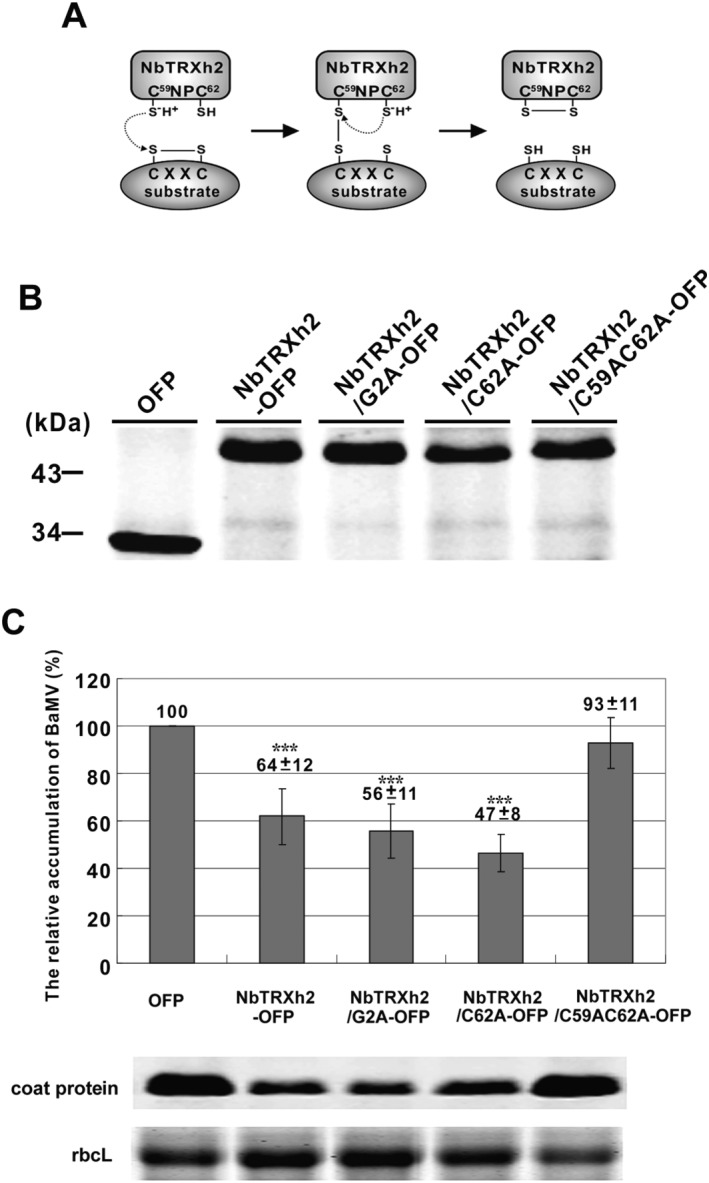Figure 6.

The effects of the expression of NbTRXh2 and its derivatives on Barley mosaic virus (BaMV) infection. (A) A schematic representation of the reaction mechanism of the thioredoxin NbTRXh2 with its proposed substrate BaMV TGBp2. (B) Western blot analysis of the transiently expressed orange fluorescent protein (OFP), NbTRXh2‐OFP, NbTRXh2/G2A‐OFP, NbTRXh2/C62A‐OFP and NbTRXh2/C59AC62A‐OFP by agro‐infiltration on Nicotiana benthamiana leaves as indicated. The total proteins were extracted and separated onto a 12% sodium dodecylsulfate (SDS)‐polyacrylamide gel. The primary antibody was rabbit anti‐OFP antibody and the secondary antibody was the goat anti‐rabbit immunoglobulin G (IgG) antibody. The molecular weight is indicated to the left of the gel. (C) The relative accumulation of BaMV coat protein on the inoculated leaves detected at 5 days post‐inoculation with NbTRX1‐OFP, NbTRXh2/G2A‐OFP, NbTRXh2/C62A‐OFP, NbTRXh2/C59AC62A‐OFP or OFP (as a control) transiently expressed on the virus‐inoculated leaves for the last 2 days. The data determined from Western blots were normalized with the large subunit of RuBisCO (rbcL) as the loading control stained with Coomassie blue. The numbers shown above the bars are the average and standard error of at least three independent experiments. Asterisks indicate statistically significant difference of the indicated group analysed by Student's t‐test (***P < 0.001).
